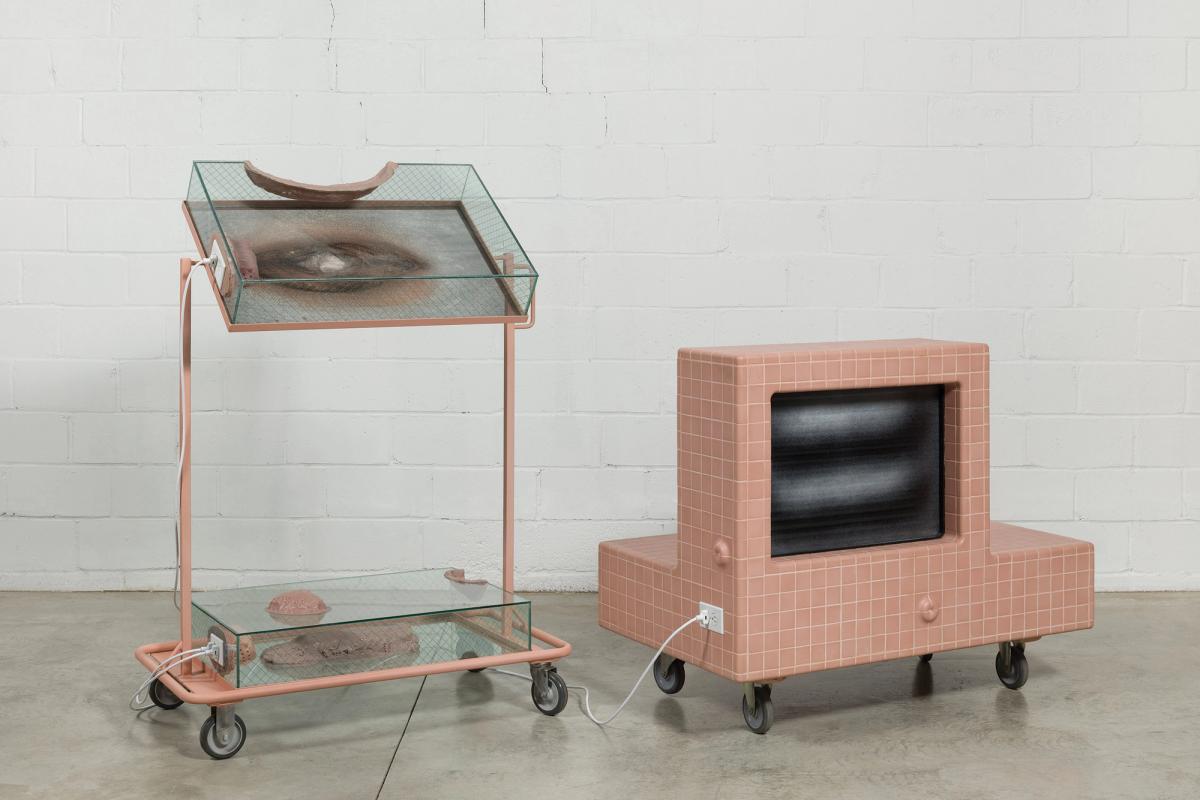The Empty Gallery in Hong Kong is shining a spotlight on the Chinese-American artist Tishan Hsu, who came to prominence in the 1980s but retreated from view in the 1990s. Hsu’s most recent works are on display at the gallery’s Grand Marine Center venue, while earlier pieces from the 1980s and 1990s are on view at its stand at Art Basel Hong Kong. “We found Tishan, archived his work and got his studio up and running again,” says Alexander Lau, the gallery’s director.
Works at the fair include the installation Feed Forward (1989, $80,000), a piece mimicking a hospital drip using a Diet Pepsi bottle, and the styrofoam and enamel work White Noise (1983, price undisclosed), which resembles a warped electronic plug socket.
The forms and contours of Hsu’s futuristic works are inspired by technology. “In some of my earliest work, I reference forms from technological devices such as radio and television that were beginning to penetrate our cognitive reality in new and more invasive ways,” Hsu says.
The artist often uses “relatively traditional processes, such as silkscreen, painting and carving, to explore the effect and feeling of technology,” says Lau, who adds that Hsu’s interest in technology grew out of his upbringing and training as an architect (Hsu studied architecture at the Massachusetts Institute of Technology in the early 1970s).
Hsu says that his work may have been overlooked because although it was “intuitive and slow”, it did not reference any text or history, “which has been an important component of contemporary art”. He adds: “While there was significant collector and institutional interest, there was not enough to create a market.”
But in a sense, technology caught up with Hsu. At the turn on the millenium, he began to make works using early versions of Photoshop. “Looking back, the evolution of imaging software, printing technologies, new materials, sensor technology, video and sound have enabled the work to unfold in clearer and more radical ways. The sensibility needed the technology. There has been a synchronicity that I did not expect,” he says.
In the past few years, Hsu has worked on a project focused on historical photographs discovered in albums of his extended family; this new body of work is on show at Empty Gallery. “The work evolved out of a confluence of events, including the death of my mother in Boston, which precipitated my setting up a studio in Shanghai, where family members who I never knew for most of my life have lived for many years,” Hsu says.
He discovered that family photos were physically removed from several of his great uncle’s family albums during the Cultural Revolution; some of the new works incorporate images of these defaced pages. “Recent advances in the technology of photography and the internet have enabled me to reconnect to an ‘absent’ history through historical photographs preserved and shared by extended family members in China and the US.”
• Tishan Hsu, Empty Gallery, until 25 May
For more shows to see during Art Basel in Hong Kong, see our exhibition round-up


